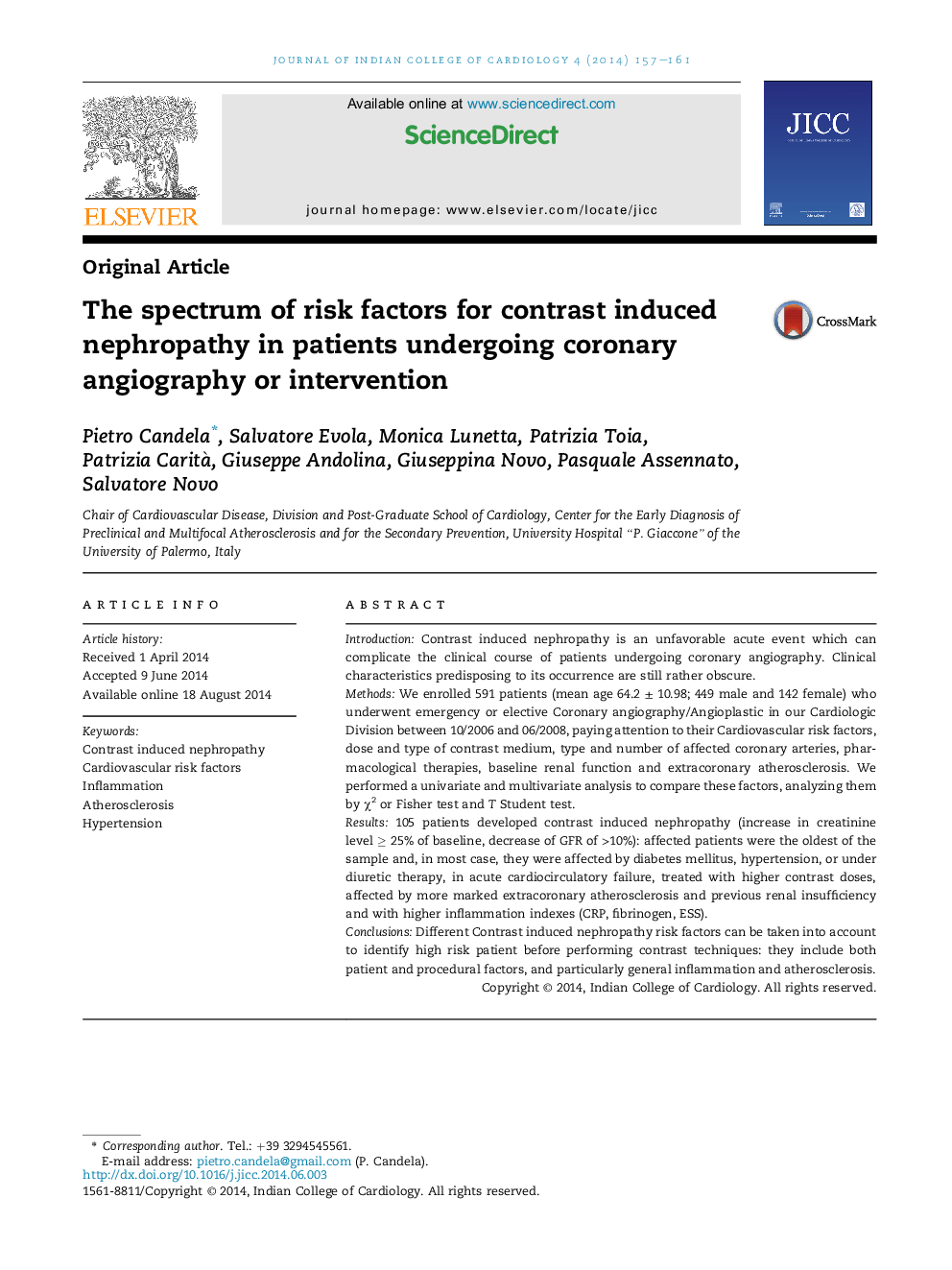| Article ID | Journal | Published Year | Pages | File Type |
|---|---|---|---|---|
| 2973961 | Journal of Indian College of Cardiology | 2014 | 5 Pages |
IntroductionContrast induced nephropathy is an unfavorable acute event which can complicate the clinical course of patients undergoing coronary angiography. Clinical characteristics predisposing to its occurrence are still rather obscure.MethodsWe enrolled 591 patients (mean age 64.2 ± 10.98; 449 male and 142 female) who underwent emergency or elective Coronary angiography/Angioplastic in our Cardiologic Division between 10/2006 and 06/2008, paying attention to their Cardiovascular risk factors, dose and type of contrast medium, type and number of affected coronary arteries, pharmacological therapies, baseline renal function and extracoronary atherosclerosis. We performed a univariate and multivariate analysis to compare these factors, analyzing them by χ2 or Fisher test and T Student test.Results105 patients developed contrast induced nephropathy (increase in creatinine level ≥ 25% of baseline, decrease of GFR of >10%): affected patients were the oldest of the sample and, in most case, they were affected by diabetes mellitus, hypertension, or under diuretic therapy, in acute cardiocirculatory failure, treated with higher contrast doses, affected by more marked extracoronary atherosclerosis and previous renal insufficiency and with higher inflammation indexes (CRP, fibrinogen, ESS).ConclusionsDifferent Contrast induced nephropathy risk factors can be taken into account to identify high risk patient before performing contrast techniques: they include both patient and procedural factors, and particularly general inflammation and atherosclerosis.
